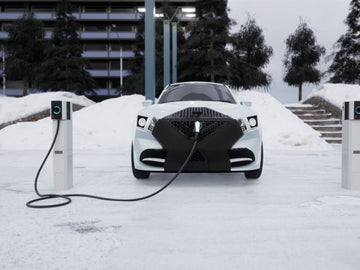
The decision between Level 1 and Level 2 chargers holds significant importance for electric vehicle (EV) owners, as it directly impacts the efficiency and convenience of their charging experience. Level 1 chargers, which plug into standard household outlets, are accessible and straightforward but offer a slower charging rate, ideal for those with low daily mileage or flexible schedules. Level 2 chargers, requiring dedicated equipment and a higher voltage, provide faster charging speeds and are suited for drivers with higher daily usage or more immediate charging needs. Factors such as daily driving habits, the practicality of installing a home EV charger, and the convenience of public charging stations all influence this choice. By carefully weighing these elements, EV owners can select a charger type that best aligns with their lifestyle, optimizing both the cost-effectiveness and practicality of their EV experience.
Understanding Level 1 Charging
Level 1 charging represents the most basic form of electric vehicle (EV) charging, utilizing a standard household outlet with a voltage of 120 volts. This method involves connecting the EV to the outlet using a Level 1 charging cable, typically provided with the vehicle. While Level 1 charging is the slowest among the available options, it is practical for EV owners with predictable daily routines and shorter commutes. The charging process is straightforward—users plug their EVs into a standard wall outlet, and the vehicle draws alternating current (AC) to charge the battery. Due to the lower voltage, Level 1 chargers are particularly suitable for overnight charging scenarios, providing ample time to replenish the vehicle's battery while parked at home.
Level 1 charging is ideal for EV owners who primarily charge at home and have the luxury of leaving their vehicles parked for extended periods. It is a cost-effective and convenient solution, leveraging existing electrical infrastructure in residential settings. This method is well-suited for users with predictable daily driving patterns and the flexibility to charge their EVs overnight, ensuring that the vehicle is ready for daily use. While it may not be the fastest charging option, Level 1 charging provides a practical entry point for many EV owners, offering a straightforward and accessible solution for those with less extensive daily driving demands.
Level 1 charging is a straightforward and accessible option for electric vehicle owners with predictable routines and shorter commutes. It leverages standard household outlets for convenient overnight charging, making it a cost-effective and practical choice for those primarily charging at home. While it may not suit users with higher daily driving demands, the simplicity and accessibility of Level 1 charging contribute to its appeal as an entry-level charging solution in the electric vehicle landscape.

Exploring Level 2 Charging
Level 2 charging represents a significant advancement in electric vehicle (EV) charging technology, offering faster charging times compared to Level 1. These chargers operate on a higher voltage of 240 volts and deliver a more robust alternating current (AC) to the EV's battery. The increased power output significantly reduces charging times, making Level 2 charging more suitable for EV owners with more extensive daily driving demands. Level 2 chargers utilize specialized connectors, such as SAE J1772 in North America, providing a standardized and efficient charging experience. They are commonly found in various settings, including workplaces, public charging stations, and residential locations equipped with dedicated charging equipment.
One of the key specifications of Level 2 chargers is their power output, typically ranging from 3.3 kilowatts (kW) to 19.2 kW. This higher power delivery allows for shorter charging times, providing users with added convenience and flexibility. Level 2 charging is preferable over Level 1 in scenarios where users require faster charging speeds to accommodate their daily driving patterns. For those with longer commutes or those who need to charge their EVs more frequently, Level 2 chargers offer a practical solution. These chargers are especially beneficial for users who do not have the luxury of overnight charging and need to recharge their vehicles during the day. Additionally, Level 2 charging is valuable for those who may not have access to DC fast chargers but still desire faster charging capabilities compared to Level 1.
Level 2 charging provides a faster and more efficient charging experience for electric vehicle owners with higher daily driving demands. Its increased power output and reduced charging times make it preferable over Level 1 in scenarios where users require a quicker turnaround for their charging needs. Whether at the workplace, public locations, or residential settings with dedicated charging equipment, Level 2 chargers contribute to the overall convenience and accessibility of EV charging, supporting a broader range of users with varying charging requirements.

Comparative Analysis
When comparing Level 1 and Level 2 EV charger, several factors come into play, influencing the charging experience for electric vehicle (EV) owners. Charging speed stands out as a key consideration—Level 2 chargers, operating at a higher voltage and power output than Level 1, offer significantly faster charging times. While Level 1 chargers deliver around 2 to 5 miles of range per hour, Level 2 chargers can provide approximately 10 to 60 miles of range per hour, making them more suitable for users with higher daily driving demands. The convenience of Level 2 charging becomes evident when users need a quicker turnaround for their EVs, especially in scenarios where overnight charging is not sufficient.
Moreover, the cost-effectiveness of Level 1 and Level 2 chargers plays a crucial role in the decision-making process. Level 1 chargers, leveraging standard household outlets, are more accessible and cost less to install. However, the trade-off is the slower charging speed. On the other hand, Level 2 chargers require dedicated equipment installation, incurring higher upfront costs. Despite this, the faster charging times and increased convenience make Level 2 charging cost-effective for users with specific needs. Analyzing these factors helps users weigh the trade-offs and select the charger type that aligns with their budget and charging requirements.
Individual driving habits and lifestyle are pivotal considerations when choosing between Level 1 and Level 2 chargers. For users with predictable daily routines, shorter commutes, and the luxury of overnight charging at home, Level 1 chargers may be sufficient. This scenario is ideal for those who do not require rapid charging and can conveniently replenish their vehicle's battery during extended periods of parking. On the other hand, users with more extensive daily driving demands, frequent travel, or those who rely on their EVs for business purposes may find Level 2 EVCS more suitable. The faster charging speeds accommodate users who need their vehicles ready for use within a shorter timeframe, making Level 2 chargers a practical choice for those with dynamic and fast-paced lifestyles.
|
Charger Type |
Voltage (Volts) |
Amperage (Amps) |
Power (kW) |
Charge Speed (Miles of Range Per Hour) |
Charge Time for 100 Miles of Range |
|
Level 1 |
120V |
8-16A |
0.96-1.92 kW |
Slower (~2-5 miles per hour) |
Approximately 20-50 hours |
|
Level 2 |
208-240V |
16-80A |
3.3-19.2 kW |
Faster (~10-30 miles per hour) |
Approximately 2-10 hours |
Note: The charge speed and charge time estimates are generalizations and can vary based on specific charger specifications, the electric vehicle's battery capacity, and the initial state of charge. Users should refer to the detailed specifications of their Level 1 or Level 2 chargers and consult their electric vehicle's manual for more accurate charging time estimations.
In the realm of Level 2 EV chargers, Amproad presents an innovative solution catering to a diverse range of electric vehicle (EV) owners. Amproad's Level 2 EV charger boasts a wide voltage compatibility, ranging from 90 to 250 volts, enhancing its flexibility and adaptability to various electrical setups. This feature ensures that Amproad chargers can seamlessly integrate into different residential and commercial environments. Additionally, Amproad offers adjustable amp ratings, ranging from 10 to 40 amps, allowing users to customize the charging speed based on their specific needs. This adjustable amp feature is particularly beneficial for users who wish to balance charging speed with energy efficiency or accommodate different power supply capacities. Amproad's commitment to user-friendly and adaptable charging solutions contributes to the overall accessibility and convenience of Level 2 charging for a broad spectrum of EV owners.
Charging Infrastructure and Compatibility Considerations
When considering charging infrastructure and compatibility, the accessibility and availability of Level 1 and Level 2 chargers play a crucial role in facilitating convenient electric vehicle (EV) charging. In residential settings, Level 1 chargers, which operate with standard household outlets, are widely accessible and often the default choice for EV owners. This accessibility makes overnight charging convenient for those with predictable daily routines and shorter commutes, contributing to the growing adoption of EVs in residential areas. Level 2 chargers, on the other hand, are strategically positioned in both residential and public settings, including workplaces, shopping centers, and public parking facilities. This broader accessibility addresses the needs of users with higher daily driving demands, offering faster charging options beyond the confines of home.
Moreover, as electric vehicle charging infrastructure continues to expand, compatibility with diverse charging solutions becomes essential. Level 1 and Level 2 chargers have become standard in most EVs, ensuring that users can easily access a variety of charging options. Tesla, a prominent player in the electric vehicle market, has its unique charging network known as Tesla Destination charger. These chargers, often located at hotels, restaurants, and parking facilities, provide Tesla owners with convenient charging options while they go about their daily activities. Tesla Destination chargers are typically Level 2 chargers, showcasing the commitment of electric vehicle manufacturers to create a seamless and compatible charging experience for their users.


